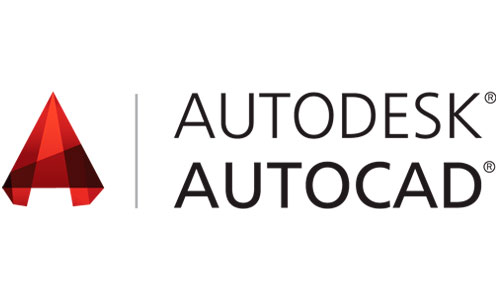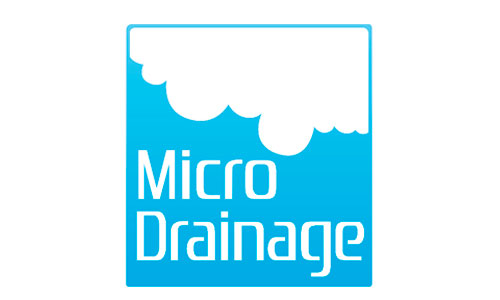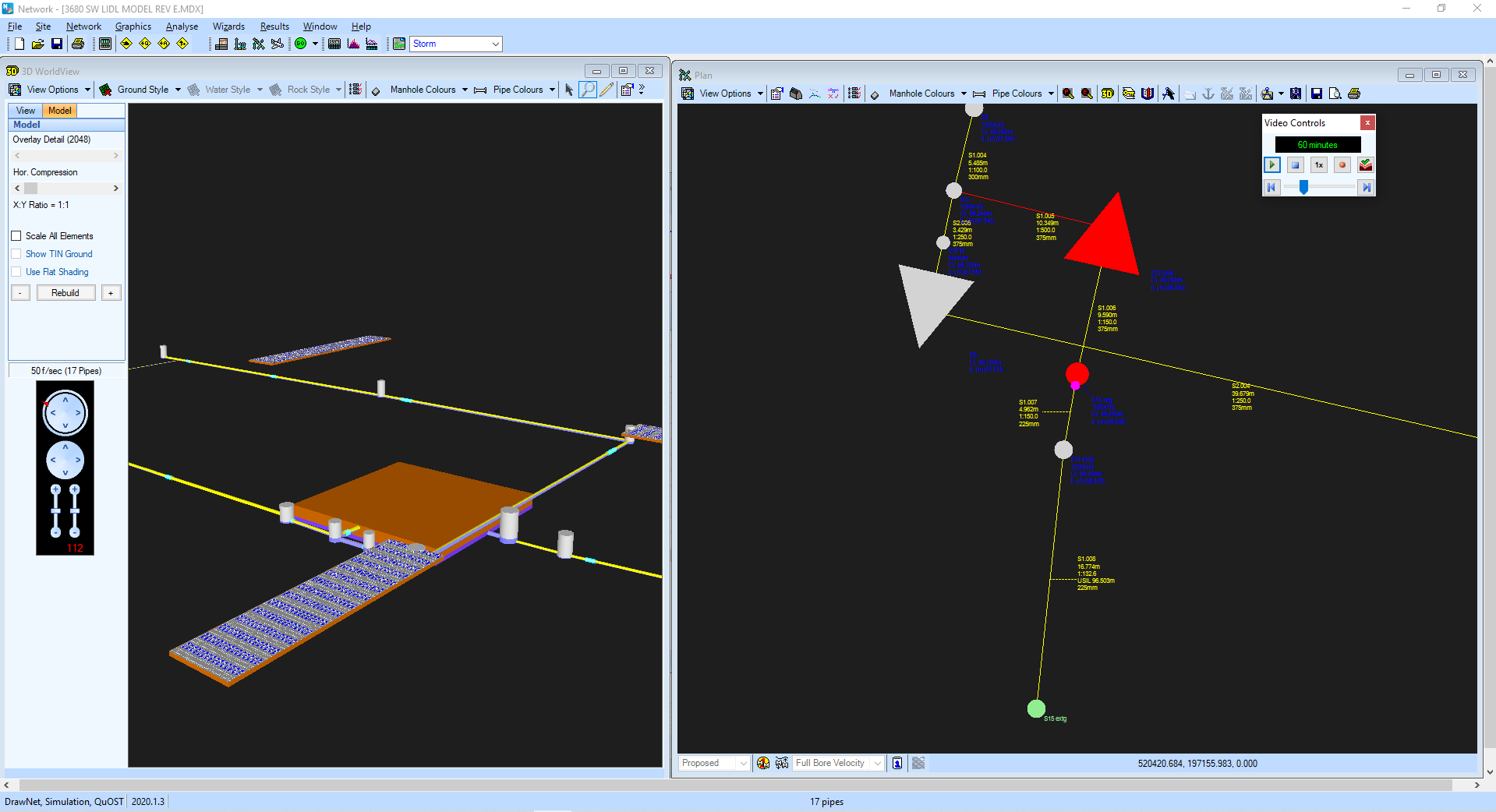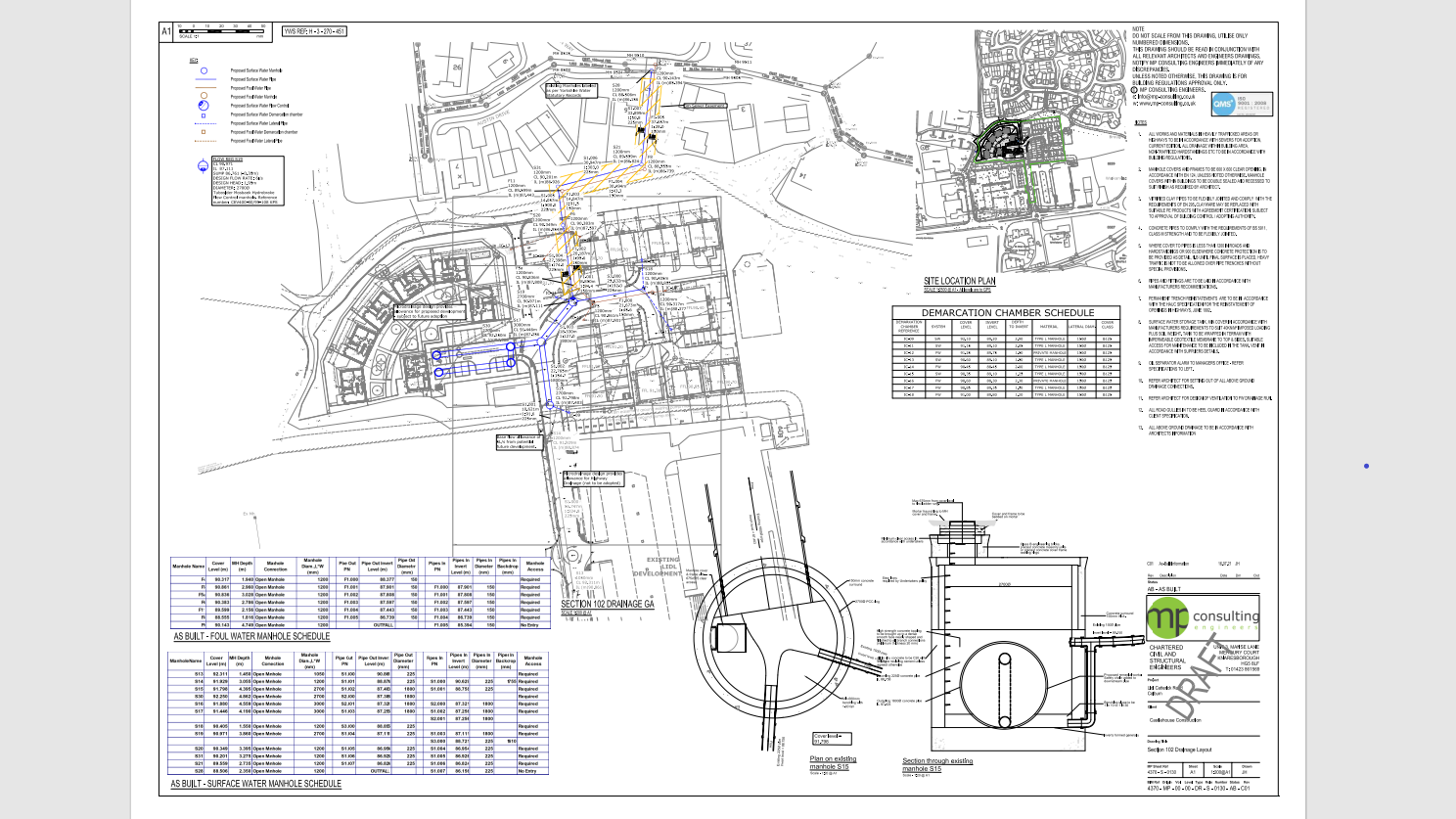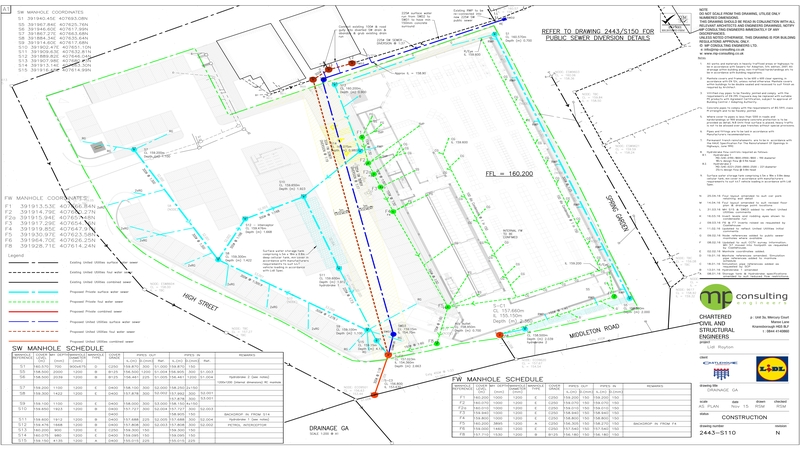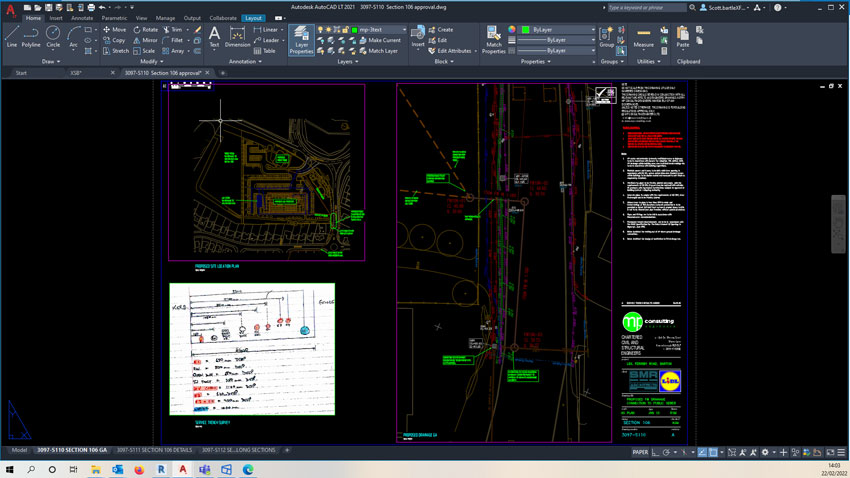CIVIL & STRUCTURAL ENGINEERING
BELOW GROUND DRAINAGE
Below Ground Drainage Engineering Design
Need Further Advice
Contact Our Engineers
What we do
Below Ground Drainage Design
Working closely with clients, stakeholders, contractors and approval bodies, MP provide services from desk top review and collation of survey information through design and simulation of networks to completion of construction information for implementation on site.
Although the design process is standardized, the route to approval is inherently bespoke and requires an understanding of the regional standards to achieve
Below Ground Drainage
Sustainable Urban Drainage Systems SUDS
This design process is enshrined at both local and national levels with the National Planning Policy Framework NPPF.
Drainage design process is commenced on a hierarchical assessment of where the surface water generated by rainfall on the site can best be discharged.
The principles of Sustainable Urban Drainage Systems may then inform design decisions taken by not only how building roofs, parking, access roads and pavements are arranged, but also how landscaping areas may be utilized within a coordinated drainage strategy.
MP complete SUDS schemes for retail, commercial and residential projects, with the drainage networks being design for local authority adoption or maintenance by the owner. We have experience of multiple forms of Sustainable Urban Drainage Systems, from ponds, swales, infiltration, raingarden and porous pavement systems which can be used in combination to provide ‘SUDS train’ where enhanced restriction is dictated by site and planning parameters.
Below Ground Drainage
Drainage Design & Simulation
Simulation is able to look at rainfall intensity parameters based on geography and annual risk on the drainage system as a whole, including the gravity network of pipes and manholes together with structures and controls such as infiltration into the ground, open ponds & swales, flow regulation, attenuation tank structures and outfalls.
Below Ground Drainage
Planning Conditions, Drainage Adoption,
There are however other stakeholders involved with the approval of drainage, in particular where the proposed development connects to the existing public sewer network which is managed regionally by multiple companies in England and nationally by Welsh and Scottish Water.
Below Ground Drainage
Environment Agency/SEPA, SAB, CRT, IDB
Surface water drainage within Wales is defined by a process referred to as SAB. SAB comprises a detailed assessment within multiple areas to provide a robust review of SUDS, Flood risk reduction, Ecology, Bio diversity and long term maintenance strategy.
Waterways in England are controlled by the Canals and Rivers Trust CRT. The body arranges agreement to discharge surface water under license to engineered waterways. Discharge of surface water to waterways is possible by agreement and long term payment.
Numerous regions within England have strategic local drainage authorities referred to as Internal Drainage Boards IDB who manage secondary water features which fall below the remit of the Environment Agency. Discharge to watercourse bodies offers opportunities for multiple SUDS structures, which can be integrated into the project landscape strategy to provide amenity and biodiversity as part of the overall design.
Below Ground Drainage
Section 104 Agreement – WIA
The Water Industry Act outlines a legal agreement between developer and Sewerage Undertaker which allows the sewer to be constructed by the developer and then maintained in future by the Sewerage Authority.
The agreement allows private drainage within a development to connect to the public network, subject to the system complying with the requirements for public sewer laid out in the Sewers for Adoption information.
Below Ground Drainage
Section 106 Agreement – WIA
Limited agreement which typically requires only confirmation of connection type and flow rate for completion.

